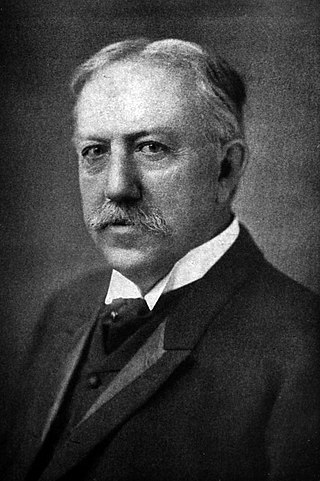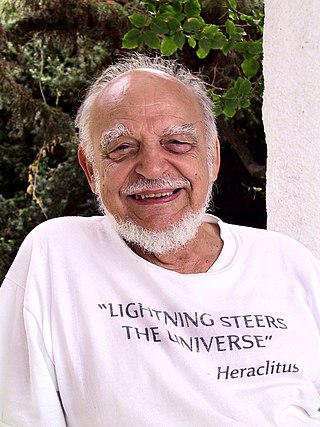
Guerrilla warfare is a form of irregular warfare in which small groups of combatants, such as paramilitary personnel, armed civilians, or irregulars, use military tactics including ambushes, sabotage, raids, petty warfare, hit-and-run tactics, and mobility, to fight a larger and less-mobile traditional military.

War is an intense armed conflict between states, governments, societies, or paramilitary groups such as mercenaries, insurgents, and militias. It is generally characterized by extreme violence, destruction, and mortality, using regular or irregular military forces. Warfare refers to the common activities and characteristics of types of war, or of wars in general. Total war is warfare that is not restricted to purely legitimate military targets, and can result in massive civilian or other non-combatant suffering and casualties.

Indianapolis, colloquially known as Indy, is the capital and most populous city of the U.S. state of Indiana and the seat of Marion County. According to the U.S. Census Bureau, the consolidated population of Indianapolis and Marion County was 977,203 in 2020. The "balance" population, which excludes semi-autonomous municipalities in Marion County, was 887,642. It is the 15th most populous city in the U.S., the third-most populous city in the Midwest, after Chicago and Columbus, Ohio, and the fourth-most populous state capital after Phoenix, Arizona, Austin, Texas, and Columbus. The Indianapolis metropolitan area is the 33rd most populous metropolitan statistical area in the U.S., with 2,111,040 residents. Its combined statistical area ranks 28th, with a population of 2,431,361. Indianapolis covers 368 square miles (950 km2), making it the 18th largest city by land area in the U.S.

Indiana University Bloomington is a public research university in Bloomington, Indiana. It is the flagship campus of Indiana University and, with over 40,000 students, its largest campus.

David Starr Jordan was the founding president of Stanford University, serving from 1891 to 1913. He was an ichthyologist during his research career. Prior to serving as president of Stanford University, he had served as president of Indiana University from 1884 to 1891.

John Gibbon was a career United States Army officer who fought in the American Civil War and the Indian Wars.

The Journal of American History is the official academic journal of the Organization of American Historians. It covers the field of American history and was established in 1914 as the Mississippi Valley Historical Review, the official journal of the Mississippi Valley Historical Association. After the publication of its fiftieth volume, the recognition of a shift in the direction of the membership and its scholarship led to the name change in 1964.

The U.S. Army John F. Kennedy Special Warfare Center and School (SWCS) – known informally as "Swick" – primarily trains and educates United States Army personnel for the United States Army Special Operations Command and United States Special Operations Command, which includes Special Forces, Civil Affairs, and Psychological Operations personnel. Its purpose is to recruit, assess, select, train and educate the U.S. Army Civil Affairs, Psychological Operations and Special Forces Soldiers by providing training and education, developing doctrine, integrating force-development capability, and providing career management.

Alfred de Grazia, born in Chicago, Illinois, was a political scientist and author. He developed techniques of computer-based social network analysis in the 1950s, developed new ideas about personal digital archives in the 1970s, and defended the catastrophism thesis of Immanuel Velikovsky.
The infantry in the American Civil War comprised foot-soldiers who fought primarily with small arms, and carried the brunt of the fighting on battlefields across the United States. Historians have long debated whether the evolution of tactics between 1861 and 1865 marked a seminal point in the evolution of warfare. The conventional narrative is that generals and other officers adhered stubbornly to the tactics of the Napoleonic Wars, in which armies employed linear formations and favored open fields over the usage of cover. Presumably, the greater accuracy and range of the rifle musket rendered that approach obsolete, and the Civil War armies' transition to longer battles in 1864 is taken by numerous scholars as proof of the new technology's transformative impact. More recently, however, academics have begun to reject this narrative. Earl J. Hess judges the tactical training of the Civil War as critical to the armies' success, and maintains that the dearth of overwhelming victories during the conflict was actually consistent with the infrequency of such battles throughout history. Allen C. Guelzo contends that rifle muskets did not revolutionize land warfare due to a combination of inadequate firearms training and the poor visibility caused by black powder. This debate has implications not only for the nature of the soldier's experience, but also for the broader question of the Civil War's relative modernity. Williamson Murray and Wayne Wei-Siang Hsieh argue that the conflict was resulted from "the combination...of the Industrial Revolution and French Revolution [which] allowed the opposing sides to mobilize immense numbers of soldiers while projecting military power over great distances." The War involved a number of other recently introduced and new technologies, including military balloons, repeating rifles, the telegraph, and railroads.

Vivandière or cantinière is a French name for women who are attached to military regiments as sutlers or canteen keepers. Their actual historic functions of selling wine to the troops and working in canteens led to the adoption of the name 'cantinière' which came to supplant the original 'vivandière' starting in 1793. The use of both terms was common in French until the mid-19th century, and 'vivandière' remained the term of choice in non-French-speaking countries such as the US, Spain, Italy, and Great Britain. Vivandières served in the French army up until the beginning of World War I, but the custom spread to many other armies. Vivandières also served on both sides in the American Civil War, and in the armies of Spain, Italy, the German states, Switzerland, and various armies in South America, though little is known about the details in most of those cases as historians have not done extensive research on them.
The 6th Indiana Infantry Regiment was an infantry regiment from the State of Indiana that served in the Union Army during the American Civil War. This regiment was the senior Indiana regiment of the Civil War, as it was numbered first in sequence after the five Indiana volunteer regiments which had served in the Mexican–American War. The regiment was originally mustered-in for a three-month period of service between April and August 1861, but after its initial term of service had expired it was re-formed in September 1861 for a further three-year period, before being mustered out in September 1864.

Indiana, a state in the Midwest, played an important role in supporting the Union during the American Civil War. Despite anti-war activity within the state, and southern Indiana's ancestral ties to the South, Indiana was a strong supporter of the Union. Indiana contributed approximately 210,000 Union soldiers, sailors, and marines. Indiana's soldiers served in 308 military engagements during the war; the majority of them in the western theater, between the Mississippi River and the Appalachian Mountains. Indiana's war-related deaths reached 25,028. Its state government provided funds to purchase equipment, food, and supplies for troops in the field. Indiana, an agriculturally rich state containing the fifth-highest population in the Union, was critical to the North's success due to its geographical location, large population, and agricultural production. Indiana residents, also known as Hoosiers, supplied the Union with manpower for the war effort, a railroad network and access to the Ohio River and the Great Lakes, and agricultural products such as grain and livestock. The state experienced two minor raids by Confederate forces, and one major raid in 1863, which caused a brief panic in southern portions of the state and its capital city, Indianapolis.
Irregular warfare (IW) is defined in United States joint doctrine as "a violent struggle among state and non-state actors for legitimacy and influence over the relevant populations." Concepts associated with irregular warfare are older than the term itself.

32nd Regiment Indiana Volunteer Infantry was a Union Army infantry regiment during the American Civil War. It was also known as Indiana's "1st German" regiment because its members were mainly of German descent. Organized at Indianapolis, the regiment's first recruits mustered into service on August 24, 1861. From 1861 to 1865, the 32nd Indiana was attached to the first Army of the Ohio and the Army of the Cumberland, where it served in the Western Theater.

The United States Navy (USN) is the maritime service branch of the United States Armed Forces and one of the eight uniformed services of the United States. It is the largest and most powerful navy in the world, with the estimated tonnage of its active battle fleet alone exceeding the next 13 navies combined, including 11 allies or partner nations of the United States as of 2012. It has the highest combined battle fleet tonnage and the world's largest aircraft carrier fleet, with eleven in service, two new carriers under construction, and five other carriers planned. With 336,978 personnel on active duty and 101,583 in the Ready Reserve, the United States Navy is the third largest of the United States military service branches in terms of personnel. It has 290 deployable combat vessels and more than 2,623 operational aircraft as of June 2019.
Entomological warfare (EW) is a type of biological warfare that uses insects to interrupt supply lines by damaging crops, or to directly harm enemy combatants and civilian populations. There have been several programs which have attempted to institute this methodology; however, there has been limited application of entomological warfare against military or civilian targets, Japan being the only state known to have verifiably implemented the method against another state, namely the Chinese during World War II. However, EW was used more widely in antiquity, in order to repel sieges or cause economic harm to states. Research into EW was conducted during both World War II and the Cold War by numerous states such as the Soviet Union, United States, Germany and Canada. There have also been suggestions that it could be implemented by non-state actors in a form of bioterrorism. Under the Biological and Toxic Weapons Convention of 1972, use of insects to administer agents or toxins for hostile purposes is deemed to be against international law.

Allegations that the United States military used biological weapons in the Korean War were raised by the governments of the People's Republic of China, the Soviet Union, and North Korea. The claims were first raised in 1951. The story was covered by the worldwide press and led to a highly publicized international investigation in 1952. Secretary of State Dean Acheson and other American and allied government officials denounced the allegations as a hoax. Subsequent scholars are split about the truth of the claims.

This is a comprehensive listing of the radio programs made by Orson Welles. Welles was often uncredited for his work, particularly in the years 1934–1937, and he apparently kept no record of his broadcasts.
Radio is what I love most of all. The wonderful excitement of what could happen in live radio, when everything that could go wrong did go wrong. I was making a couple of thousand a week, scampering in ambulances from studio to studio, and committing much of what I made to support the Mercury. I wouldn't want to return to those frenetic 20-hour working day years, but I miss them because they are so irredeemably gone.














